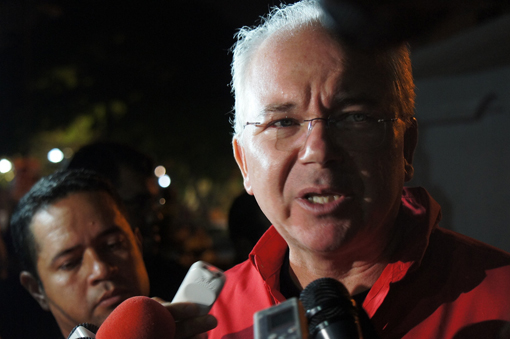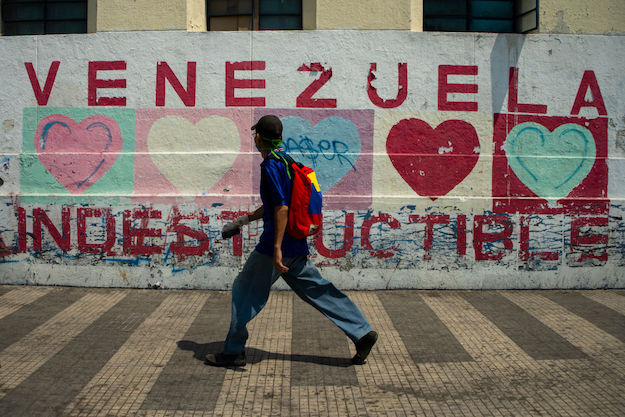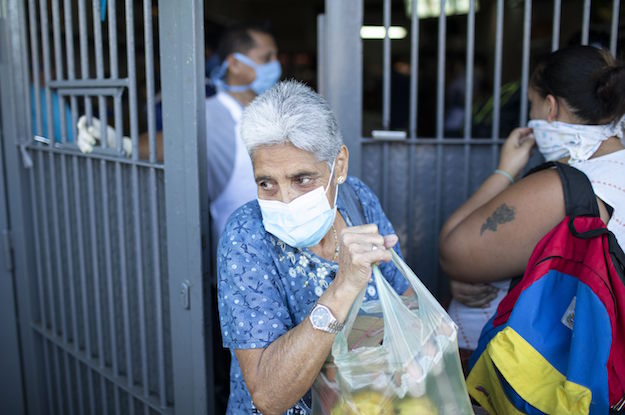Throughout 2012, and especially after President Hugo Chávez’ death in early March 2013, Venezuela’s national oil firm, Petróleos de Venezuela S.A. (PDVSA), has taken measures beyond anything done in the past decade to raise its lagging production. While the likely impact merits cautious analysis, the drivers of the Bolivarian Republic’s scramble for increased oil revenues are clear.
The Bolivarian state has run into a dollar crisis, on top of a litany of other chronic ills. The state urgently needs to find a new balance such as cutting outsized populist spending and increasing revenues. Still, for the foreseeable future, Venezuela’s only possibility for significant new revenues—barring a record oil price rise as Chávez enjoyed—is for PDVSA to increase production. Post-Chávez chavismo is acutely and nervously aware of this reality.
Focus on Mature Fields, Enlisting the Private Sector
By all indications, PDVSA’s immediate focus for boosting output is in applying enhanced oil production (EOP) methods to reinvigorate mature fields. After decades of conventional exploitation, production has fallen or been abandoned at thousands of wells. Although the game-changing potential of Venezuela resides in the large-scale development of its “extra-heavy” oil fields in the Faja Orinoco region, Venezuela has exploited the “heavy” oil of Lake Maracaibo, Monagas and other regions for nearly 100 years.
A similar program to exploit mature oil fields was enthusiastically and repeatedly pushed by Chávez in 2007-2008 on his Sunday “Aló Presidente” program, where he introduced Chinese visitors said to be involved in a plan in which Chinese equipment and engineers would supervise production of 30 percent of national oil production by 2015. A Chinese joint service venture with PDVSA was signed on April 4, 2008,[1] but it never materialized into any concrete action.
Despite the lack of momentum on the Chinese plan, a mature-field-first strategy is reasonable. EOP in Venezuela is relatively simple due to its geology, and with modern exploration methods, the amount of remaining oil in and around mature fields is often underestimated. The possibility of certified oil reserves being larger than expected has proved very lucrative for PDVSA’s partners.[2]
Mature fields also are in developed regions with the necessary infrastructure—pipelines, ports, refineries, etc.—to support oil production along with the towns, roads and electrical grids to support workers and families. This is significant since Venezuela has been unable to maintain infrastructure in major cities or build the complex greenfield projects that many remote Faja fields require.
PDVSA—strained managerially and technically and in need of capital—needs significant assistance. Once Chávez died, “PDVSA socialista” began vigorously enlisting private domestic firms in a national effort to raise production. Conferences with goods or services providers were held in Sucre, Zulia, Falcón, Anzoáteguí, and Monagas states.
On July 20, 2013, approximately 320 businesspeople attended a meeting in Puerto Ordaz to discuss PDVSA’s 2019 Faja development plan. The Cámara Petrolera de Venezuela (Venezuelan Petroleum Chamber), Federación de Cámaras y Asociaciones de Comercio y Producción de Venezuela (Federation of Venezuelan Chambers and Associations of Trade and Production), Federación de Industriales, pequeños, medianos y artesanos de Venezuela (Federation of Small, Medium and Artesanal Industrialists of Venezeula) and others participated. [3] The PDVSA documents and plans from these meetings[4]—and statements by private sector leaders—show that the process represents a new level of collaboration unlike Chávez’ previous China scheme.[5]
Obstacles to Success
The disrepair of PDVSA facilities is striking, with the Amuay refinery disaster last year highlighting the many failures and costing some 40 to 50 lives. Still, in the last one to two years, PDVSA’s board has apparently begun focusing on jump-starting investment in mature fields. For example, PDVSA built a new flexible-pipeline facility and installed significant expanses of pipe around Lake Maracaibo to connect old fields and distribute gas for the high-pressure injection necessary for enhanced oil extraction.
Now, PDVSA has called for private domestic firms to bid on “reinvigorating” production at thousands of wells. This is reminiscent of a major opening by the old PDVSA in the 1980s to private foreign and domestic firms to boost production in Lake Maracaibo. Those projects were then re-nationalized by Chávez in 2010.
Even though the recent series of meetings between PDVSA and the private sector are full of promises by PDVSA to end past problems, PDVSA President Rafael Ramírez is known to be no more generous on contract terms with domestic, international or even Chinese firms than Chávez was—and to be just as likely to withhold payments due to firms and to oppose the repatriation of foreign-firm funds. For these reasons, it is possible that, out of necessity, the Maduro administration would prefer a new head of PDVSA. However, the departure of Ramírez could be problematic for the already precarious company if several key managers left with him.
Beyond personalities, a caution on this new private-PDVSA partnering is that the Venezuelan government and PDVSA simply do not have cash to pay, and PDVSA owes huge sums to its partners. The country is enmeshed in a dollar-shortage crisis as the government prepares to face municipal elections in December. The temptation to raid PDVSA cash and managers—starving the goose that lays the golden eggs, Chávez style—is immense but would wreck PDVSA’s minimal-yet-unprecedented efforts.
Beijing’s Frustration and Demands
Beijing’s assistance in providing short-term cash and the expertise it could provide to develop both the Faja fields and regional infrastructure are important factors in PDVSA’s recovery. A few months ago, in difficult talks for another loan-for-oil, Beijing made undisclosed demands that caused Venezuela to walk away.
Since then, Beijing, deeply distrustful of the capacity and credibility of Venezuela and PDVSA, has made demands including an unprecedented “partnership” in planning Venezuelan mining and petroleum sectors. While the government and PDVSA are in dire need of assistance and are now clearly accepting Beijing’s conditions, this type of a partnership would decimate Chávez’ promise for resource sovereignty.
Beijing now has its vision of how to proceed—and, given the dollar crisis and other problems in Venezuela, it now has the leverage to achieve its vision. Over the past century, Venezuela’s oil sector was integrated with that of the United States, but U.S. demand for imports is not growing. Objectively, Venezuela’s oil export future is in East Asia, where the demand lies—and with China in particular.
Moving Forward
Given the many plans to increase PDVSA’s depressed production, and the unmet production target projections, the recent push should be approached with caution. At the same time, it should be remembered that Venezuela’s low production in the last decade is an anomaly among OPEC’s “price hawk” faction, to which the Bolivarian PDVSA belongs. Even regimes such as those of Libya’s Muammar Gaddafi and Iraq’s Saddam Hussein maintained high levels of production, and often under sanctions.
There is, in the end, one fundamental reason why PDVSA might not be able to reverse its miserable performance of the past decade—the excessive and undisciplined raiding of its funds and managerial talent by the Office of the President of the Republic to win elections. If President Nicolás Maduro and President of the National Assembly Diosdado Cabello can resist this addiction, there is no reason that Venezuela, a state literally floating on oil, could not increase its production and sustain the country economically.
*Tom O’Donnell, PhD, a former Fulbright Scholar in Caracas, analyzes global energy, especially oil, in international relations, and blogs at http://GlobalBarrel.com.
[1] See http:pdvsa.com and search for “Empresa Mixta de Servicios entre China y Venezuela consolidará soberanía operacional” Note, PDVSA’s web site does not offer URL’s to directly accessing particular articles
[2][2] The experience of Harvest Oil in this regard is notable. See: http://globalbarrel.com/2012/06/23/venezuelan-faja-surprise-usas-harvest-sells-not-to-china-but-indonesia/
[3] The BRV publication “Informe Venezuela” gives an overview of this event. See: http://www.oncp.gob.ve/jdownloads/Informe%20Venezuela/2013/07%20Julio/INFORME_VENEZUELA_25-07.pdf
[4] To access these documents go to http://wp.me/p1BBDd-h5
[5] For a report on, for example, the PDVSA meeting with the private sector in Zulia (the second in the series) see http://pdvsa.com and search for “PDVSA y Cámara Petrolera evaluarán factibilidad de fábricas de tuberías flexible y ranurada, 16-05-2013”








